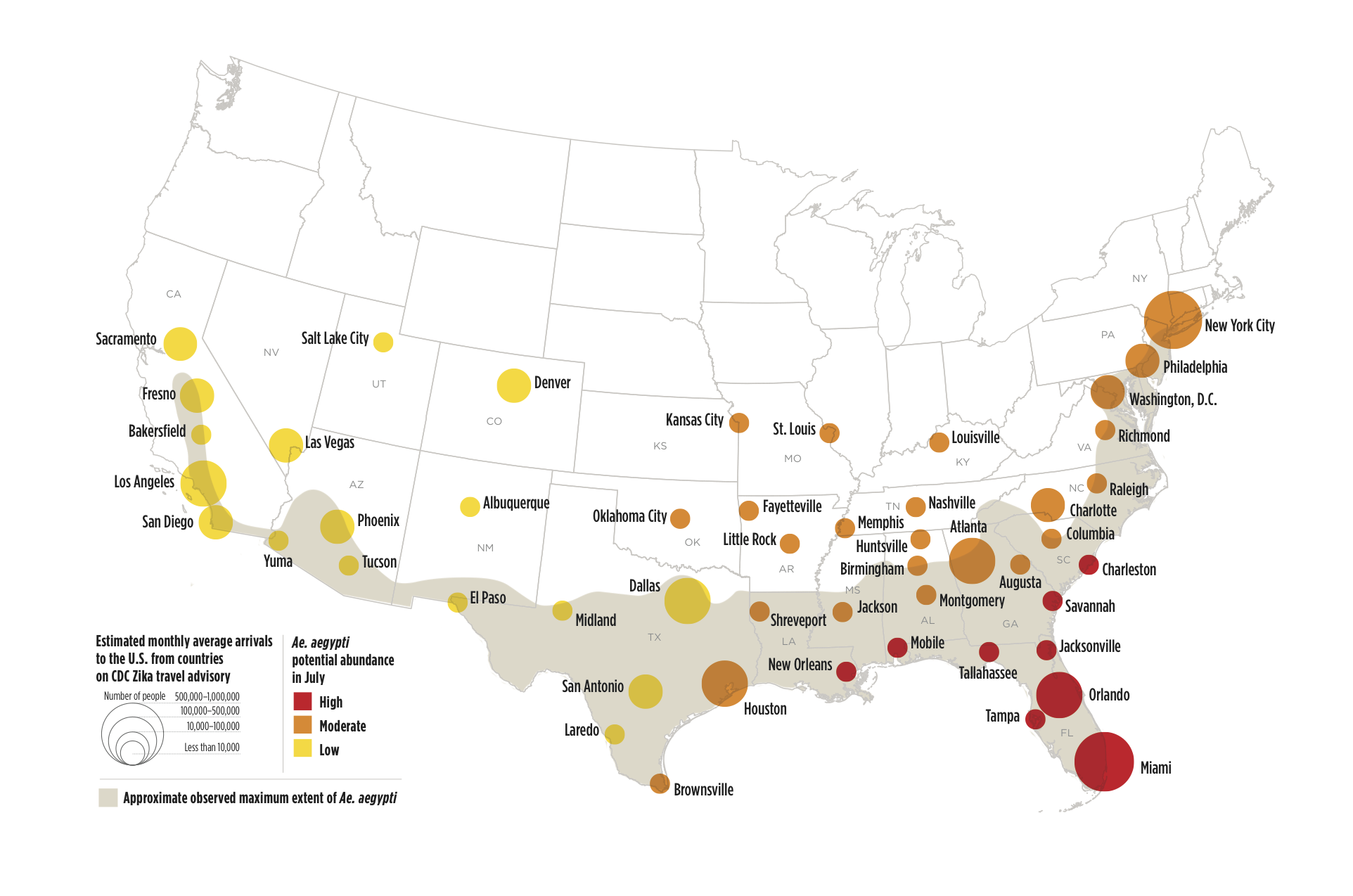March 23, 2020 by Amy Kimberlain
Roundup: Miami Tops List of U.S. Cities Facing Possible Zika Outbreak This Summer; School Lunches Healthier, But Could Be Better

Major U.S. cities, including Miami, New York City and Los Angeles, could face outbreaks of the Zika virus this summer, with the East Coast facing the biggest threat from warmer-than-normal temperatures, scientists say. Miami, along with much of South Florida, faces the highest risk of a Zika outbreak, a new report concludes.
The Aedes aegypti mosquito, which is spreading the Zika virus in much of Latin America and the Caribbean, will likely become increasingly abundant across much of the southern and eastern United States as the weather warms, according to a statement released by mosquito and disease experts Thursday at the National Center for Atmospheric Research (NCAR) in Boulder, Colorado.
Computer simulations for 50 cities suggest that the warmer temperatures could result in significant numbers of Zika-carrying mosquitoes along the East Coast as far north as New York City, and as far west as Phoenix and Los Angeles, the scientists reported.
Zika, already prevalent in much of Latin America and the Caribbean, is believed to cause microcephaly when contracted in pregnancy. This is a serious birth defect in which babies are born with abnormally small heads. The virus may also be linked to Guillain-Barre syndrome, a rare disorder that can cause paralysis. About 80 percent of infected people do not have significant symptoms, and most of the rest suffer relatively mild flu- or cold-like symptoms that generally clear up in about a week.
“This research can help us anticipate the timing and location of possible Zika virus outbreaks in certain U.S. cities,” the study’s lead author, Andrew Monaghan, a NCAR scientist, said in a news release from the National Science Foundation. The research was funded by the National Institutes of Health, NASA, and the National Science Foundation (NSF), which is NCAR’s sponsor. It was also co-authored by scientists at NASA and several U.S. universities.
Florida health officials are already anticipating that South Florida would be one of the most vulnerable U.S. regions. The state is recommending that women who are pregnant, or thinking of becoming pregnant, postpone travel to Zika affected areas.
The investigators also analyzed travel patterns to the United States from countries and territories with Zika outbreaks. The researchers concluded that cities in southern Florida and poor areas in southern Texas may be at high risk for local transmission of the virus. The study noted that northern cities could become vulnerable if a related species of mosquito that is more tolerant of cold temperatures, Aedes albopictus, begins to carry the virus.
(Click on map below to enlarge.)
Helpful Zika-related links:
School Lunches Healthier, But Could Be Better
There has been much progress in improving the quality of school lunches in U.S. elementary schools, but room for improvement remains, according to a study from the U.S. Centers for Disease Control and Prevention.
The percentage of schools regularly offering healthy items, such as vegetables (other than potatoes), fresh fruit, salad bars and whole grains, increased significantly from 2006–2007 to 2013–2014, the study found. Meanwhile, the percentage of schools offering less healthy foods, such as fried potatoes, regular pizza, and high-fat milks decreased significantly.
There were geographical and demographic disparities within the result. For example, schools in the West were significantly more likely to offer salad bars than were schools in the Northeast, Midwest, or South. Schools with low socioeconomic status were significantly less likely to offer salads regularly than were schools with middle or high socioeconomic status, the CDC said.
Data were obtained from annual cross-sectional surveys at 4,630 public elementary schools participating in the National School Lunch Program.
Despite the improvement overall, “additional opportunities for improvement remain,” concludes the report.
“Between 1994 and 2010, the percentage of children’s energy intake from sugar and fat obtained at school improved, but flavored milks, fried potatoes, and pizza consumed at schools still significantly contributed to empty calories in 2009–10,” the study said.
Related articles:
top stories













There are no comments